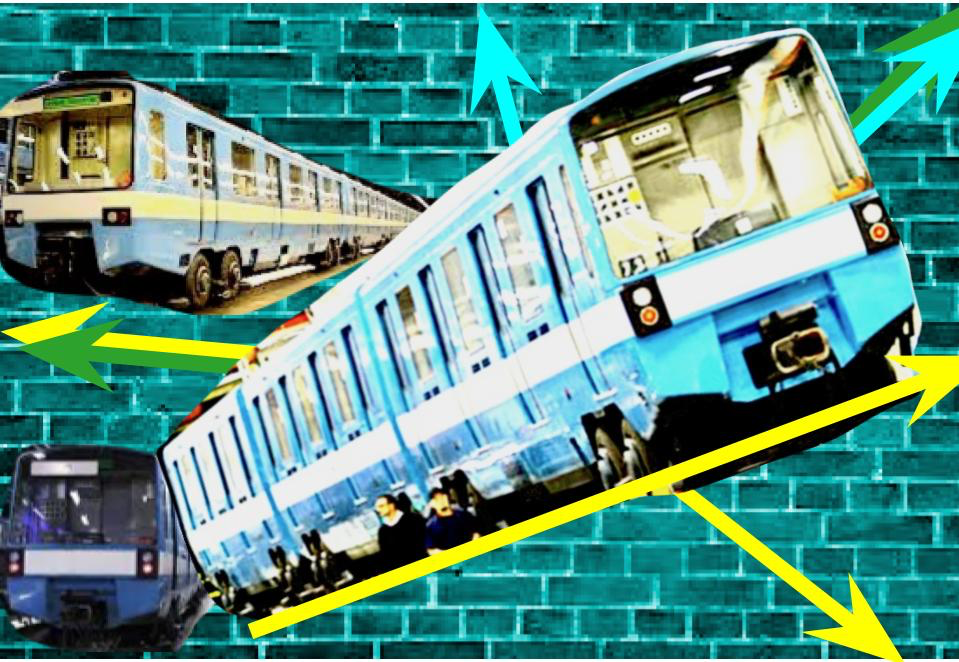Climate crisis is occurring in real-time all around us. Newfoundland is buried in snow, Australia is on fire, California is still on fire (as always), as is Russia in its Siberian region. The good news is that people all over the world are starting to realize the gravity of what we are facing, demanding actions from elected officials and private corporations. Liberal politicians are also outbidding each other in the breadth of their climate action proposals, dubbed with ambitious names like “Green New Deals” or Trudeau’s “Net Zero Pledge.” Those are all fantastic ideas, except that they all forget to address the elephant in the room, transportation.
Transportation is by all accounts, the single largest contributor to greenhouse gases in North America. In the United States, “the largest sources [of greenhouse gases] are passenger cars and light-duty trucks, including sport utility vehicles, pickup trucks, and minivans,” according to the U.S. Environmental Protection Agency. Uncle Sam’s undue obsession with heavy cars and trucks is having a real toll on the environment.
As reported by Environment and Climate Change Canada (ECCC), Canada is not doing much better than its southern neighbour, with transportation “being the second-largest source of GHG emissions, accounting for 24% (174 megatonnes of carbon dioxide equivalent) of total national emissions in 2017,” only to be narrowly surpassed by Canada’s oil and gas sector. The report also points out that passenger vehicles and civil aviation are responsible for more than half of all transportation-related emissions in Canada.
What’s more concerning is that the sheer number of CO2 emissions equivalent generated by automobiles is surging in Canada, showing no hint of tuning down any time soon. “Between 1990 and 2017, [greenhouse gas] emissions from the transportation sector grew by 43%. The growth in emissions was mostly driven by increases from freight trucks and passenger light trucks,” said an ECCC report.
It doesn’t take an expert to point out this alarming trend: People are driving way too much, and it’s becoming a problem. However, an average car-loving American or Canadian does not have any option in terms of transportation except by automobiles. In many parts of North America, the public transit system is in such a “sorry” state that it has become impossible to rely on it for daily commutes. The bus may either be 20 minutes late or operating on a 2-hour interval or even never showing up. More often than not, the bus route is either confusing or useless, sometimes both. Making things worse, on evenings and weekends, the schedule is usually reduced or out-of-service altogether, failing to recognize a basic fact that people need to be out and about on any day of the week. For people with decreased mobility, there are additional hurdles making public transit unusable, as exemplified by a $25,000 wheelchair accommodation fee that Amtrak recently attempted to charge two of its passengers for using wheelchairs.
A lot of passengers riding on many of North America’s transit feel disrespected by the way the system was designed. It was no accident. Transit, in the general consensus of American politics, has long been considered a social welfare program, a “handout” for the poor. Oftentimes, it is designed poorly on purpose to force people into buying cars.
Dependency on automobiles translates into a carbon-intensive lifestyle that manifests itself through cul-de-sac neighbourhoods and out-of-control urban sprawl. Still, in both D.C. and Ottawa, few politicians are willing to advocate for or recognize the crumbling state of transit, including the ones sitting on the progressive wing.
The Green New Deal briefly mentions public transit or modern passenger rail infrastructure, without any details. California’s progressive new governor Gavin Newsom slashed the California High-Speed Rail Project first month into his inauguration. Of 2020’s U.S. Democratic primary candidates, Biden pledges to spend a jaw-dropping 1.3 trillion dollars on refurbishing highways, but when it comes to transit, he is only willing to commit 0.8% of that amount. Andrew Yang boasts about the potential of electric cars and upgrading public transit to everything electric, but no mention of improving or increasing actual service anywhere in his plan. Bernie Sanders also briefly name drops electric buses and affordable transportation; still, his climate plan is largely car-centric. Politicians are cautious in making promises they can’t keep, especially ones that would fundamentally change the way of life for their constituents.
One may say: look, let’s forget about transportation for a second, there is still the gas and oil industry out there, shouldn’t we go after them? The fact is, we cannot. When people are in their cars driving around, they and their cars are the ultimate patrons of the fossil-fuel industrial complex. The petroleum sector thrives on gas because people like us continue to hand them 7% of our income every year in gasoline expenses and that number is only increasing.
Skipping gas station trips by taking transit is the most effective thing an average consumer could do to not support the fossil-fuel sector.
Usually, there is no “silver bullet” to our myriad of social problems, but in the context of climate change, there really is. Better public transit is the answer, or at least the main one. While politicians in North America are still largely looking the other way, people from all walks of life and backgrounds are coming together to make a difference. Grassroots transit advocacy groups are popping up all over the continent, from Detroit’s Transit Riders United, Riders Alliance of New York, and Miami Riders Alliance to Louisiana’s Ride New Orleans. If you are dissatisfied with the transit system in your hometown, go look for a local advocacy group, and see how you can get involved. If you’re not into advocacy, that’s totally fine, there is something that you can do very easily – ride transit whenever you can. By doing that, you’re not only reducing carbon footprints, but you are also waving a giant middle finger to the face of fossil-fuel and automobile industries, all while showing your support and love for public transit.
